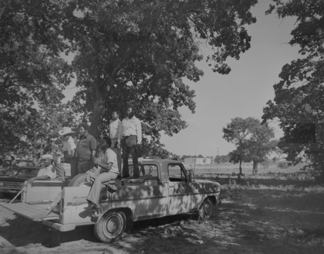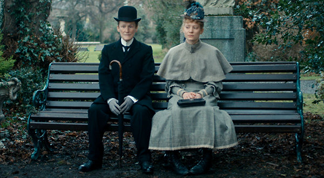By Karen Gavis/se news editor
The black and white documentary photography exhibit Peter Helms Feresten: my mind wanders to the south side of town is on display through March 8 on SE Campus.
Looking at the photographs is like seeing Fort Worth through a new perspective, said SE student Stephan Colpaert.
“It’s actually pretty uplifting,” he said.
Feresten was born June 15, 1945, and died Sept. 16, 2007. He resided in Fort Worth.
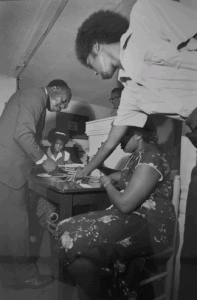
Photos by David Reid/The Collegian
“Sycamore Park” (1982) captures the image of a young, shirtless black man standing beside his car in the park while two other men sit playing dominoes at a picnic table. Also in the photo, two young children smile widely up toward the camera.
“It’s not like you told them ‘get ready’ and take a picture,” Colpaert said. “It is what you would see if you were walking by.”
Curator Christopher Blay said the focus of the exhibit is on the south side of Fort Worth, its black culture and Juneteenth celebrations. The photos were taken in the 1970s and ’80s.
“He [Feresten] was one of those people that was very interested in his subject matter,” he said.
Some of the photographs delve inside churches. In one, a young girl stands with her hands held high in worship as another watches joyfully. In another, a minister gathers an offering.
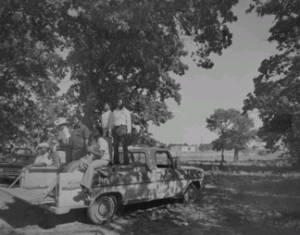
“If you see a photo of a minister or someone in a photo, this is someone Peter knew very well,” said photography professor Luther Smith of Texas Christian University.

Photos by David Reid/The Collegian
A longtime friend, Smith said he attended the Rhode Island School of Design with Feresten and watched him develop his style of photography.
“He was really interested in regular people,” he said. “He got to know them and become friends with them.”
SE architecture professor Doug Aldridge noticed the sparseness in one of the photos.
“Birds Tabernacle Basement Sanctuary” (1983) shows a congregation sitting on wooden pews.
“Everything looks so basic,” he said. “It’s very sparse, but there’s dignity about it.”
Aldridge said the building probably lacked air conditioning, and one man is holding something he probably used to fan himself.
In “Near Leslie Ct.” (1983), men are seated in chairs underneath a shade tree. Aldridge said everything in the photo seems to exist in a marginal realm where the people aren’t in the
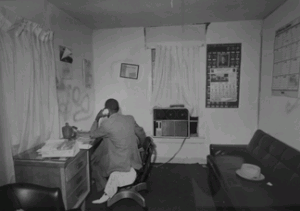
Photos by David Reid/The Collegian
country, but they aren’t in the city either.
“You can see the urban landscape in the distance,” he said. “They’re existing somewhere in between.”
SE culinary student Dawniel McKnight said she liked the exhibit.
McKnight said people in the arts are showing what they love to do, and she thinks students should do the same instead of being scared.
“The way y’all are putting stuff out, it gives us more reason to come to school,” she said. “It helps us to show our feelings.”
For 30 years, Feresten taught photography on NE Campus. NE instructional associate Mark Penland worked with Feresten several of those years.
“Peter was my mentor,” he said, “not just in photography. He was a very important man to me.”
Penland said he’s glad Feresten is getting well-deserved attention for his artwork.
“While he was documenting black churches on the south side, he was also photographing Klan meetings on the north side,” he said. ”When he passed away, he had been documenting biker culture in North Texas.”
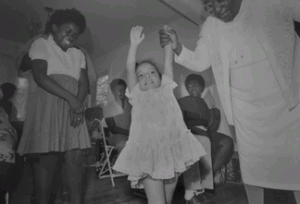
Photos by David Reid/The Collegian
Smith said there was a huge financial investment in Feresten’s photographs. He spent a lot of time and money making them but did not do it for financial return. He did it because he loved what he did.
“It wasn’t like they weren’t for sale, but it wasn’t about that,” he said. “It was about the contribution he was making to the body of knowledge.”
NE associate professor of photography Richard Doherty said Feresten made an indelible mark on photographic education in North Texas and pulled TCC’s photo area out of the dark ages.
“He was also an influential teacher who is remembered fondly by his students,” he said.






















